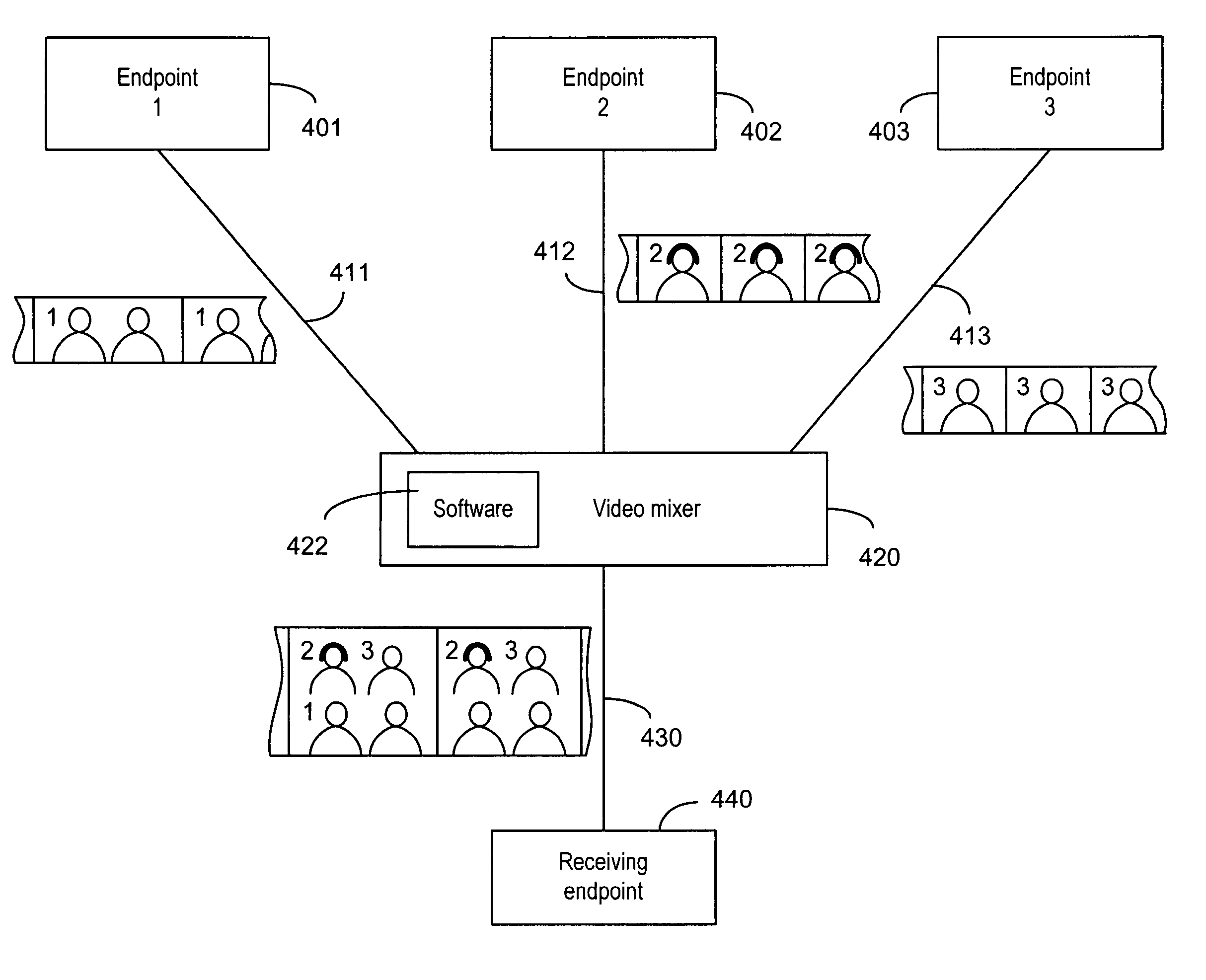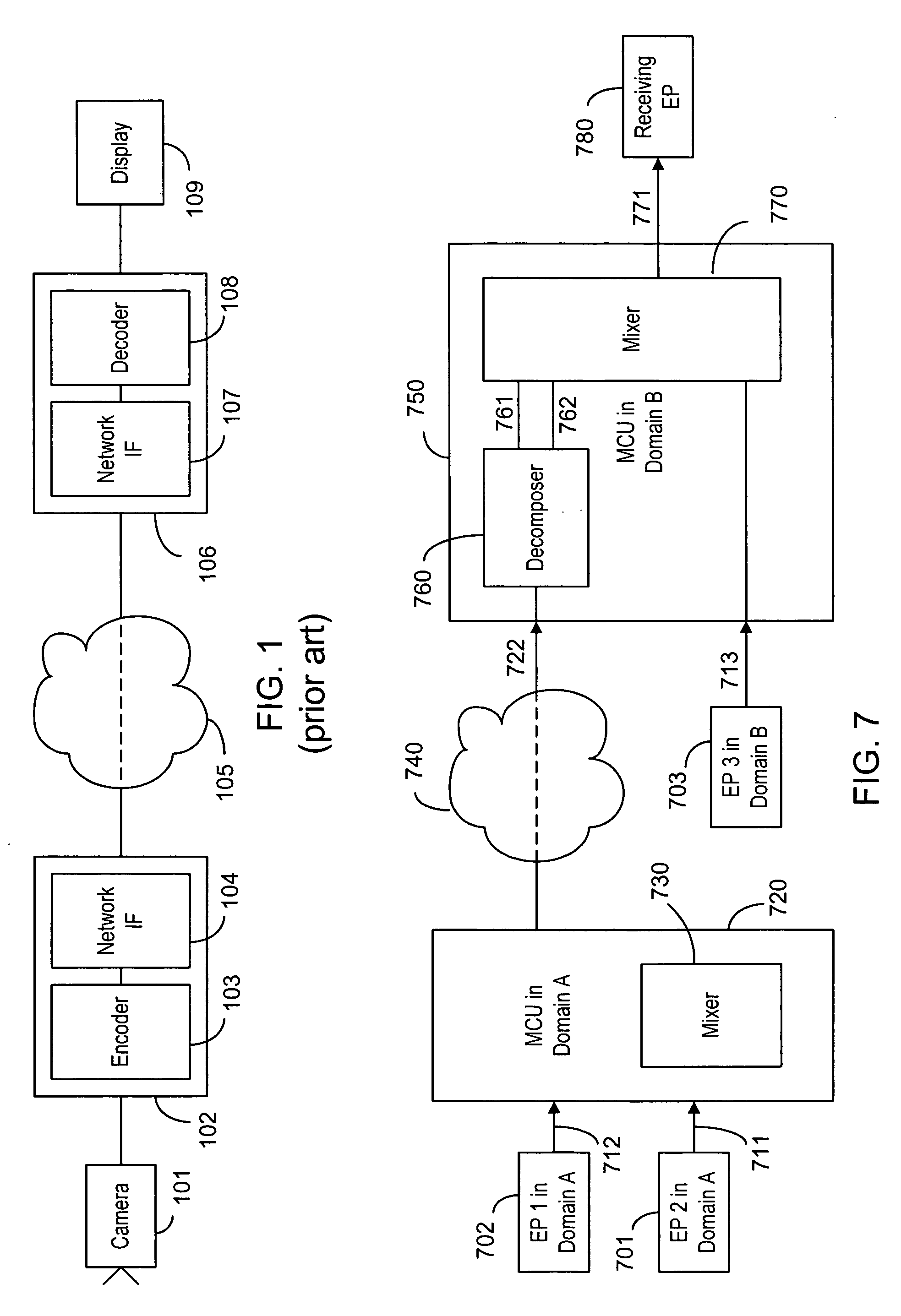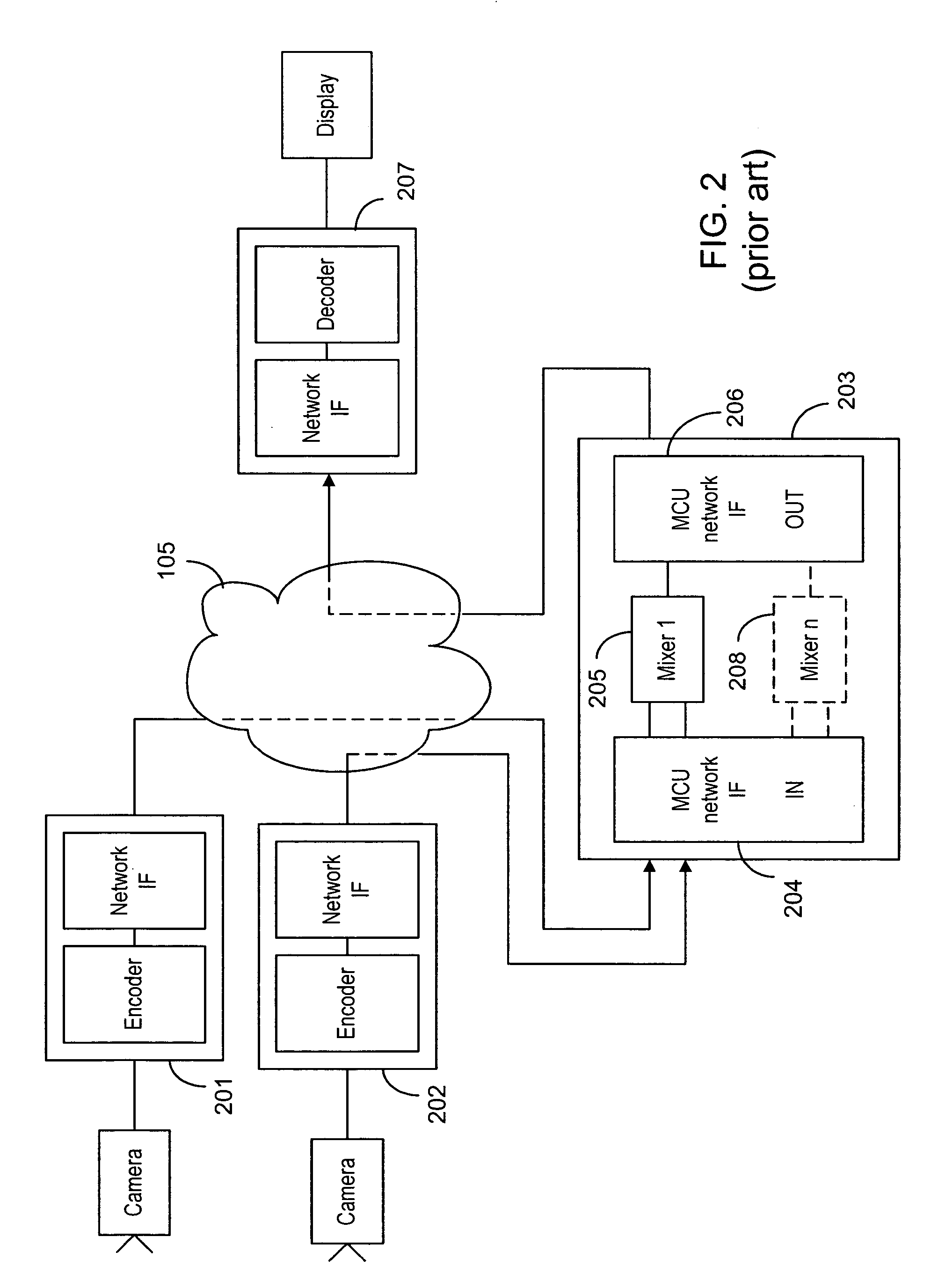Method and system for low-delay video mixing
a video mixer and low-delay technology, applied in the field of video mixers, can solve the problems of degrading image quality, delay between sending and receiving compressed video streams,
- Summary
- Abstract
- Description
- Claims
- Application Information
AI Technical Summary
Benefits of technology
Problems solved by technology
Method used
Image
Examples
second embodiment
[0130] This embodiment is concerned with mixing of non synchronized sources in a potentially error prone environment. This environment exists when the frame rates of the sending terminals are not the same (e.g. some of the sending terminals are located in the PAL (Phase Alternate Line) domain, and others in the NTSC (National Television Standard Committee) domain, or when frames may be skipped, or when frames are damaged or lost in transmission. The mixing process is considerably more complex.
[0131] In such an environment, during the startup of the conference, the mixer has to signal to the receiving terminal a maximum frame rate that is equal to or higher than the highest frame rate among the rates used by the sending terminals. Alternatively, the mixer can, during the capability exchange, force the sending terminals to a frame rate that is lower than or equal to the frame rate supported by the receiving endpoint.
[0132] Once it is established that the receiving endpoint is “faste...
PUM
 Login to View More
Login to View More Abstract
Description
Claims
Application Information
 Login to View More
Login to View More - R&D
- Intellectual Property
- Life Sciences
- Materials
- Tech Scout
- Unparalleled Data Quality
- Higher Quality Content
- 60% Fewer Hallucinations
Browse by: Latest US Patents, China's latest patents, Technical Efficacy Thesaurus, Application Domain, Technology Topic, Popular Technical Reports.
© 2025 PatSnap. All rights reserved.Legal|Privacy policy|Modern Slavery Act Transparency Statement|Sitemap|About US| Contact US: help@patsnap.com



